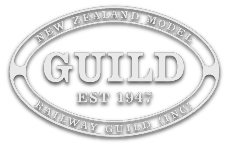
3D printing
-
3D printing
Posted by Lewis on 25 June 2024 at 9:38 amDiscussion on 3D printing of NZR models
Lewis replied 4 months, 2 weeks ago 2 Members · 9 Replies -
9 Replies
-
-
A new assembly guide for a NC class wagon from 3 Foot 6 Models:
-
-
-
It’s great to see the range of NZ prototype models available growing. I do have some general thoughts though:
1. The 3D model for the vehicle is the easy bit. That’s not to belittle the effort required, but a rail vehicle needs to run and be robust enough to stay runable for some time.
2. It’s probably sensible to start with a mechanism, or at least develop the project with that in mind. Easier for non-steamers of course. Good integration between print and mech will avoid problems.
3. 3D prints are great, but not especially robust or stable. Their use for fragile/stressed parts should be carefully considered. Stressed parts will distort unless designed to resist applied forces. Printing handrails is probably pushing your luck.
4. Some parts are better suited to etched, cast or formed metal, laser cut wood etc. Mixed media kits capture the benefits of all these materials/methods.
-
This reply was modified 6 months ago by
Lawrence.
-
This reply was modified 6 months ago by
-
Thanks Lawrence,
Absolutely agree on mixed media. In fact, that’s one of the points I made in my presentation at Henderson earlier this year – using SLS for chassis for strength, FDM for long plastic parts and SLA 3D prints for details, plus etches for parts that are very fine (grates and handrails etc). For the DM class, the handrails and grates are likely to be etched in future, I’m working with another supplier (Aaron Wall) on this, and it requires that I get the CAD design sorted for them though. For now I 3D printed the handrails, partly as a challenge, and partly for promotional purposes! I suspect it will work better in 1:87 upwards (I intend on doing an HO scale version of the DM class loco soon).
For the mechanism, this model is NZ120 which uses commercially available N-scale mechanisms, which has a number of challenges:
1. Availability: availability can be a challenge in New Zealand with N scale mechanisms. So models need to be able to fit a variety of mechanisms from different makers. As with the EMD G12 and derivatives models (i.e. NZR DA and DC classes) using SD7 and SD9 N scale locomotives as their mechanisms, it can be difficult for modellers to acquire mechanisms in a reasonable timeframe, and without the added expense of postage from the US or Asia.
2. Variations: I’ve found major variations between mechanisms even from the same manufacturers – and not just for DCC-capable and straight DC mechanisms. For example, the standard Atlas SD7 mechanisms have changed significantly in the last 10 years, from a “clam-shell” design to one with individual parts. This makes it difficult to recommend a specific mechanism in NZ120 as they do vary.
3. Pricing: as with the rest of the hobby, prices for mechanisms can vary greatly. The usual rule that you get what you pay for applies – higher-end DCC chipped mechanisms that are more reliable and are all-metal construction are more expensive. They also tend to be less available (see 1) as a result. I’ve got a Life-Like SD9 chassis that I use as a test-bed for the EMD models, which is partially plastic (the chassis itself) but also metal (weights and the motor assembly itself), the quality of the mechanism is clearly lower than an Atlas mechanism. However, going back to point (1) they’re more available and often pop up on TradeMe.
Over all it’s a case of your mileage may vary. The DM class itself has been a bit of a moveable feast, there appear to have been a lot of design revisions and changes throughout the process. Just look at the original announcement pics versus the videos of the prototype locos running on test tracks in Spain.
-
In terms of availability and pricing, I completely get the problem. Once those issues loomed larger for me, but these days I tend to take the view that if I’m going to pile hours of time into something, there’s little point in scrimping on the underpinnings.
I’m allergic to diesel, but I guess the time/effort required to finish one of these is much less than for your typical kit built steam engine. So maybe a cheap mech is not such an issue.
Given the flexibility 3D printing offers, I’d be designing the exterior skin as one part and the chassis fit as another. That way various loco shells could be offered to fit all suitable mechs relatively easily, and you only need to do the chassis fit once per chassis model. Admittedly combining skins with chassis interfaces would not be entirely straightforward, but not that difficult either.
-
-
Log in to reply.

